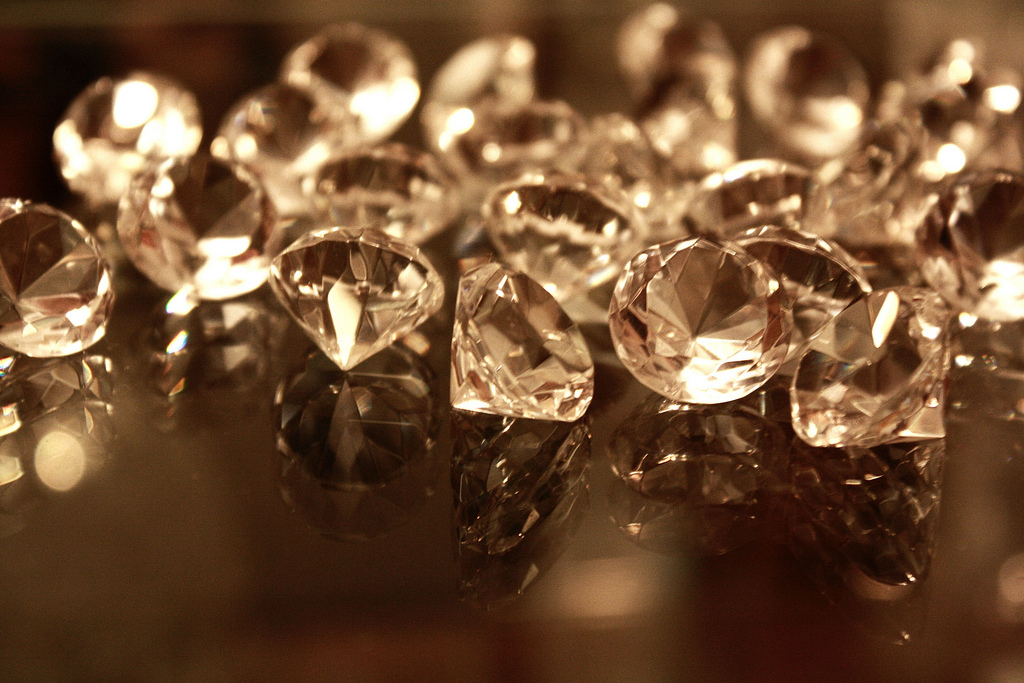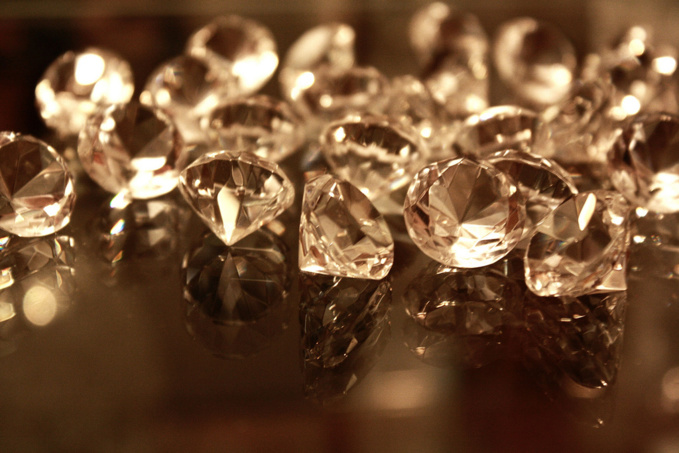De Beers Group created a new company Lightbox Jewelry to sell designer jewelry. In September 2018, the firm will begin selling artificial diamonds under the Lightbox brand and at prices that are lower than similar products on the market. "Lightbox artificial diamond of a quarter of a carat will be sold at a price of $ 200, and a diamond weighing one carat will be priced at $ 800," the statement reads.
De Beers, founded in 1888 and proud of its advertising slogan "A Diamond Is Forever", has been refusing to engage in production of artificial diamonds for many years. An extensive research conducted by the company has shown that consumers view artificial diamonds as an amusing cute product, which should not be too expensive.
"Lightbox transforms the sector that grows diamonds in the laboratory, offering consumers a product that they expected, but could not get: affordable jewelry, which may not be forever, but ideally suited for now," said De Beers Group CEO Bruce Cleaver. He stressed that this would be a smaller direction compared to the core company’s business and expressed confidence that the Lightbox brand will provide additional commercial opportunities for De Beers Group.
To date, De Beers has been skeptical about growing diamonds in the laboratory for jewelry purposes. At the same time the company has a subdivision for the production of synthetic diamonds of technical purpose, called Element Six. Currently, companies such as Diamond Foundry (USA) and New Diamond Technologies (Russia) are engaged in production of artificial diamonds. Their diamonds are 30-40% cheaper than natural ones.
According to Bloomberg, currently an artificial diamond weighing 1 carat is sold at a price of $ 4,000, and a natural diamond of the same size - for $ 8,000. De Beers offer - $ 800 for a 1 carat diamond (that is, five times cheaper than competitors) - reflect the company's strategy aimed at crowding out competitors through creating a larger gap in price between natural and artificial stones.
The company reported that each artificial diamond Lightbox weighing above 0.2 carats will be marked with the company logo. It will be invisible to the naked eye, but clearly discernible when enlarged, which should help to identify the stone as grown in a laboratory. Sale of artificial diamonds under the new label Lightbox Jewelry will begin this year. Initially, they will be available only in online Lightbox stores in the US.
Within four years, De Beers plans to invest $ 94 million in a new plant for the production of artificial diamonds near Portland in Oregon (USA). After putting the plant into operation, it will produce artificial diamonds of total volume more than 500,000 carats.
Revolution in diamonds
Attempts to create a laboratory diamond have been conducted since the 1950s, but the revolution in the industry is happening just nowadays. Recently, two main technologies have been significantly improved: creation of diamonds under the conditions of the highest temperature and pressure (HPHT) and chemical vapor deposition (CVD), when the plasma is made of carbon atoms, from which the layers condense onto the substrate layer by layer, thus forming a diamond.
HPHT technology already allows receiving diamonds of 5 carats. Since 2003, CVD technology has evolved from creation of very small diamonds of 0.3 carats to fully transparent stones of 3 carats with very good optical properties. Diamonds created by CVD technology have practically no extraneous impurities, such as nitrogen or boron, which gives them advantages over natural diamonds for both industrial and jewelry use.
Silicon Valley start-ups with multimillion investment in marketing and celebrities among shareholders have also entered the race in recent years. Among the investors of Diamond Foundry, a startup company for the production of artificial diamonds is the actor Leonardo DiCaprio and the founder of Twitter Evan Williams, the owner of Zynga Mark Pincus and the co-founder of Facebook Andrew McCollum, the former head of eBay Jeff Skoll.
The huge investments attracted by new competitors make diamonds created in laboratories look rather attractive for leading players in the world diamond market. Today, they account for only 2% of the market with a volume of $ 80 billion. However, Citibank predicts that their share will grow to 10% by 2030.
source: forbes.com
De Beers, founded in 1888 and proud of its advertising slogan "A Diamond Is Forever", has been refusing to engage in production of artificial diamonds for many years. An extensive research conducted by the company has shown that consumers view artificial diamonds as an amusing cute product, which should not be too expensive.
"Lightbox transforms the sector that grows diamonds in the laboratory, offering consumers a product that they expected, but could not get: affordable jewelry, which may not be forever, but ideally suited for now," said De Beers Group CEO Bruce Cleaver. He stressed that this would be a smaller direction compared to the core company’s business and expressed confidence that the Lightbox brand will provide additional commercial opportunities for De Beers Group.
To date, De Beers has been skeptical about growing diamonds in the laboratory for jewelry purposes. At the same time the company has a subdivision for the production of synthetic diamonds of technical purpose, called Element Six. Currently, companies such as Diamond Foundry (USA) and New Diamond Technologies (Russia) are engaged in production of artificial diamonds. Their diamonds are 30-40% cheaper than natural ones.
According to Bloomberg, currently an artificial diamond weighing 1 carat is sold at a price of $ 4,000, and a natural diamond of the same size - for $ 8,000. De Beers offer - $ 800 for a 1 carat diamond (that is, five times cheaper than competitors) - reflect the company's strategy aimed at crowding out competitors through creating a larger gap in price between natural and artificial stones.
The company reported that each artificial diamond Lightbox weighing above 0.2 carats will be marked with the company logo. It will be invisible to the naked eye, but clearly discernible when enlarged, which should help to identify the stone as grown in a laboratory. Sale of artificial diamonds under the new label Lightbox Jewelry will begin this year. Initially, they will be available only in online Lightbox stores in the US.
Within four years, De Beers plans to invest $ 94 million in a new plant for the production of artificial diamonds near Portland in Oregon (USA). After putting the plant into operation, it will produce artificial diamonds of total volume more than 500,000 carats.
Revolution in diamonds
Attempts to create a laboratory diamond have been conducted since the 1950s, but the revolution in the industry is happening just nowadays. Recently, two main technologies have been significantly improved: creation of diamonds under the conditions of the highest temperature and pressure (HPHT) and chemical vapor deposition (CVD), when the plasma is made of carbon atoms, from which the layers condense onto the substrate layer by layer, thus forming a diamond.
HPHT technology already allows receiving diamonds of 5 carats. Since 2003, CVD technology has evolved from creation of very small diamonds of 0.3 carats to fully transparent stones of 3 carats with very good optical properties. Diamonds created by CVD technology have practically no extraneous impurities, such as nitrogen or boron, which gives them advantages over natural diamonds for both industrial and jewelry use.
Silicon Valley start-ups with multimillion investment in marketing and celebrities among shareholders have also entered the race in recent years. Among the investors of Diamond Foundry, a startup company for the production of artificial diamonds is the actor Leonardo DiCaprio and the founder of Twitter Evan Williams, the owner of Zynga Mark Pincus and the co-founder of Facebook Andrew McCollum, the former head of eBay Jeff Skoll.
The huge investments attracted by new competitors make diamonds created in laboratories look rather attractive for leading players in the world diamond market. Today, they account for only 2% of the market with a volume of $ 80 billion. However, Citibank predicts that their share will grow to 10% by 2030.
source: forbes.com



















